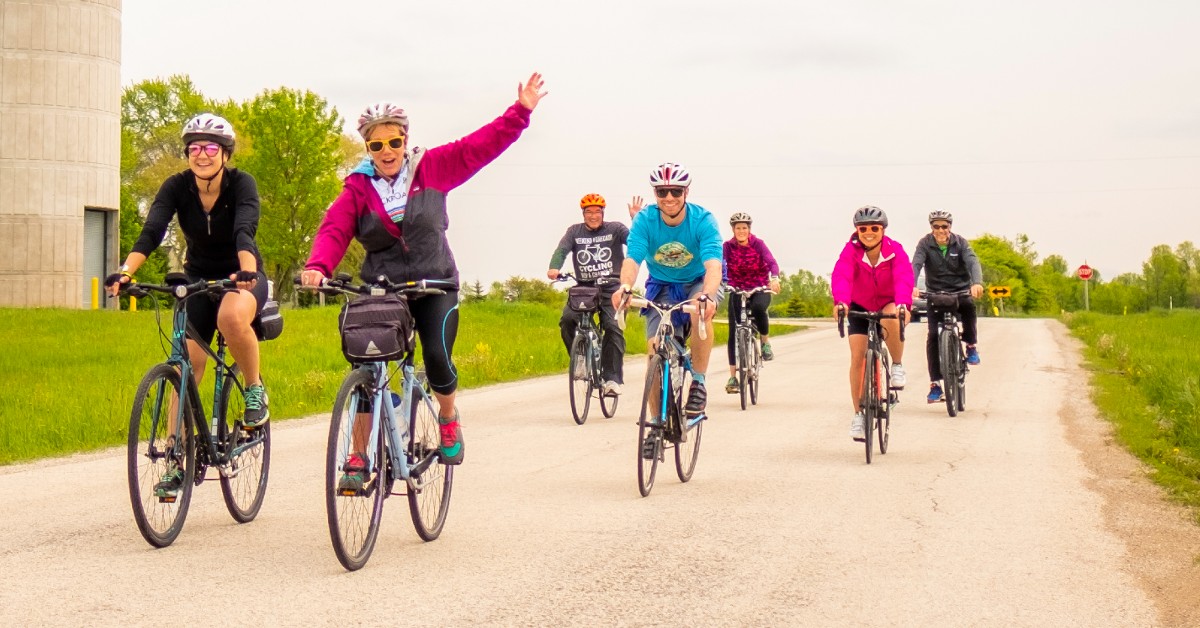
When you ride in the BayCare Clinic Century Bayshore to Lakeshore bicycle tour on Saturday, June 4, prepare yourself and your bike for the occasion.
It's a non-competitive ride for cyclists of all ability levels, with 15-, 30-, 60-, or 100-mile routes.
Registration is open.
As you ride through Brown, Door and Kewaunee counties, enjoying the scenic farmscapes, rolling hills and shoreline vistas, know that weather and temperatures along Green Bay or Lake Michigan can differ sharply from that in the city or inland. Cooler by the lake, they say.
Let's get you ready for the ride.
- Wear a bike helmet. No matter the style, shape, or weight of the helmet, choose one that fits your head properly.
- A cycling jersey can offer cooling fabric, sun protection or insulation for cooler temperatures. If you're registered for the Century, you’ll receive a moisture-wicking T-shirt you can wear on the ride.
- Wearing a cycling jersey? Stash some of the following in your pockets:
- A Ziploc bag with driver's license, insurance information, cell phone, cash and sunscreen.
- Snacks, including energy bars, gels, a banana (these also will be available at some rest stops) and a water bottle.
- Consider cycling socks. Typically made of wool or polyester, they allow your skin to breathe while keeping moisture off your body.
- Check the weather before leaving for the ride. Any changes can affect what you had planned to wear.
- Arm warmers can help if you know the temperature will change during the ride. They can easily be pulled up or scrunched down to the wrist.
- If rain is forecast, a light rain jacket will help keep you dry. It can easily be stored in a pocket or a backpack.
- Check the weather alert signs at rest stops. Color-coded signs at selected rest stops will give you a visual cue to weather conditions.
Make sure your bike is good to go your distance.
Don't wait until the night before the ride, or worse, the morning of the ride to discover you're ready to go but your bike isn't.
- Ride a clean bike. Degreaser cleans the chain, chain rings, derailleur and cassette. Use a wet cloth to wipe down the frame.
- Stop. Check your brakes. Look for wear and tear on the brake pads and cables. If you can see lines or metal on the pads, replace them. Adjust brakes so they properly hit the rim. Check the brake lever so the pull isn't too loose or too tight. Check for rust or loose strands on brake cables.
- Check your seat. If it's come loose, tighten it.
- Check your chain, too. If it's getting too stretched out, you might need to replace it. Some suggest replacing the chain once a year, or every 1,000 to 2,000 miles.
- Show some smooth moves. Bikes ride best when lubricated properly. The chain, of course, but get all the moving parts -- cables, brake levers and derailleur levers. Use grease on threaded bolts in the stem, pedals and derailleurs. Likewise bearings if you've taken things apart.
- Are you pumped up? Use a gauge to see whether your tire pressure matches the PSI on the numbers on the side of the tire. Most tires are about 120 PSI.
- Riders going longer distances may want to consider packing this flat-tire gear in a saddle bag, even though there is support on all routes:
- Patch kit
- Spare tube or tubes
- Tire lever
- CO2 cartridge
- Water bottle cages for two water bottles
- Multi tool
- Bike frames are a good place to attach:
- Water bottle cages for two water bottles
- Compact frame pump
All proceeds from the BayCare Clinic Century Bayshore to Lakeshore will benefit the BayCare Clinic Foundation, which supports causes and organizations that promote improved health and wellness in northeastern Wisconsin and Michigan’s Upper Peninsula.